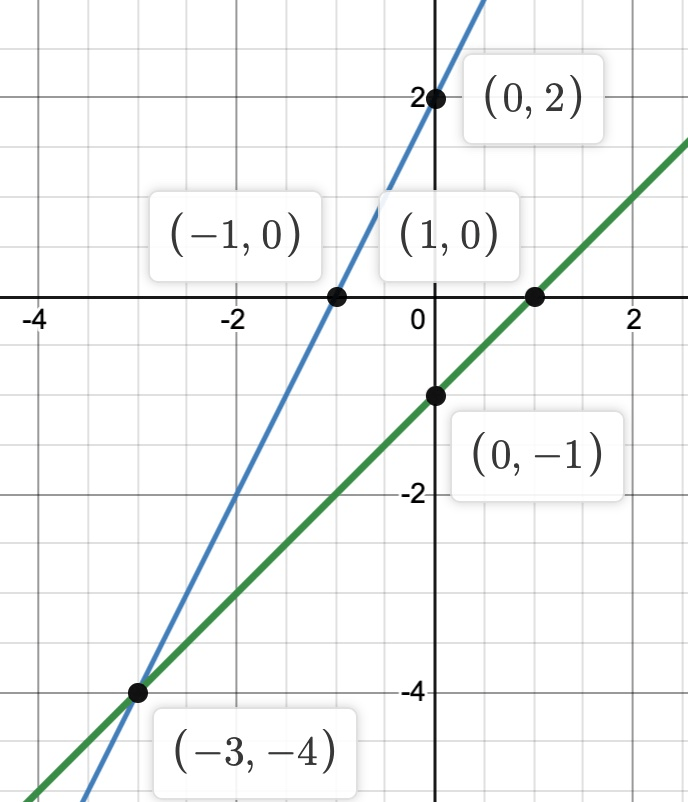x + 3 y = 5
2x - 3y = -8
(-1,2)
y = 2
3x + 2y = 10
(2,2)
y = 2x + 2
y = x - 1
(3,-4)

When graphing linear inequalities what does < and > mean?
Dashed/dotted Line
What type of slope is shown by the equation
y = 2
Zero slope (horizontal line)
4x - 3y = 16
5x + 3y = 20
(4,0)
y = x + 1
2x + y =10
(3,4)
y = 2x + 5
y = x + 3
(-2,1)
What does ≤ and ≥ mean when graphing linear inequalities?
solid line
Find the slope between the points
(3, 7) and (6, 16)
m = y2 - y1 / x2 - x1
3
-2x - 9y = -25
-4x - 9y= 23
(-1,3)
y = 5x - 1
2y = 3x + 12
(2,9)
3x - 2y = 8
x + y = 6
(4,2)
Systems of inequalities can only be solved by ______
graphing
Put into y = mx + b form
8x + 2y = 10
y = -4x + 5
4x - 9y = 2
12x - 5y = -38
(-4,-2)
2x - 3y = -2
y= -4x + 24
(5,4)
y = 1/2x + 2
y = 1/4x + 4
(8,6)
How is graphing systems of inequalities different than graphing systems of equations?
they use dotted lines sometimes and you have to shade to find the solution
What is the slope of the equation:
5y - 10x = 20
2